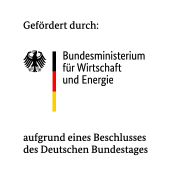Possible applications of decentralized oxygen generation in industrial furnaces
The use of direct oxygen enrichment in the combustion air to increase energy efficiency and productivity and to reduce process-related emissions is state of the art in many high-temperature processes. The reduction of the fuel requirement through oxygen enrichment of the combustion air results from the lower nitrogen content in the combustion air. Nitrogen does not participate in the combustion reactions, but is also brought to process temperature. Flue gas losses can be significantly reduced by low nitrogen or nitrogen-free combustion. In addition, oxygen enrichment by reducing the N2 content leads to higher flame temperatures, which can increase heat transfer and thus productivity.
The economic efficiency of the use of oxygen for combustion processes is primarily determined by the ratio of the O2 price to the fuel price. More than 90% of the oxygen is produced centrally in cryogenic air separation plants with an energy consumption of 0.46 — 0.64 kWh/m³ O2 (STP), whereby the energy price dominates the production costs. However, these large-scale plants are only available from 5,000 m³ O2/h (STP), which is why the profitability for the majority of potential customers is worsened by the transport costs incurred. Fraunhofer IKTS is currently developing a vacuum process for the decentralized production of oxygen using MIEC membranes (MIEC — Mixed Ionic Electronic Conductor). This provides for the provision of volume flows in the order of 10 m³ O2/h (STP) with an energy requirement of 0.5 kWh/m³ O2 (STP). Part of this energy demand can also be provided by process heat. The aim of the project is to investigate the technical and economic application possibilities of MIEC membrane plants for industrial furnaces in the ferrous and non-ferrous metal industry and to evaluate their potential for increasing energy efficiency and profitability. To this end, plant concepts for the integration of an oxygen membrane plant in industrial furnaces will be developed and various application scenarios evaluated with the aid of an energetic model of the overall process. The oxygen membrane plant is to be heated with process waste heat or natural gas instead of conventional electrical heating, as this significantly improves energy efficiency, economy and exhaust emissions.

The IGF project 20252 BG/1 of the Forschungsvereinigung Forschungskuratorium Maschinenbau e.V. was funded by the AiF within the framework of the programme for the promotion of joint industrial research (IGF) of the Federal Ministry of Economics and Energy on the basis of a resolution of the German Bundestag.